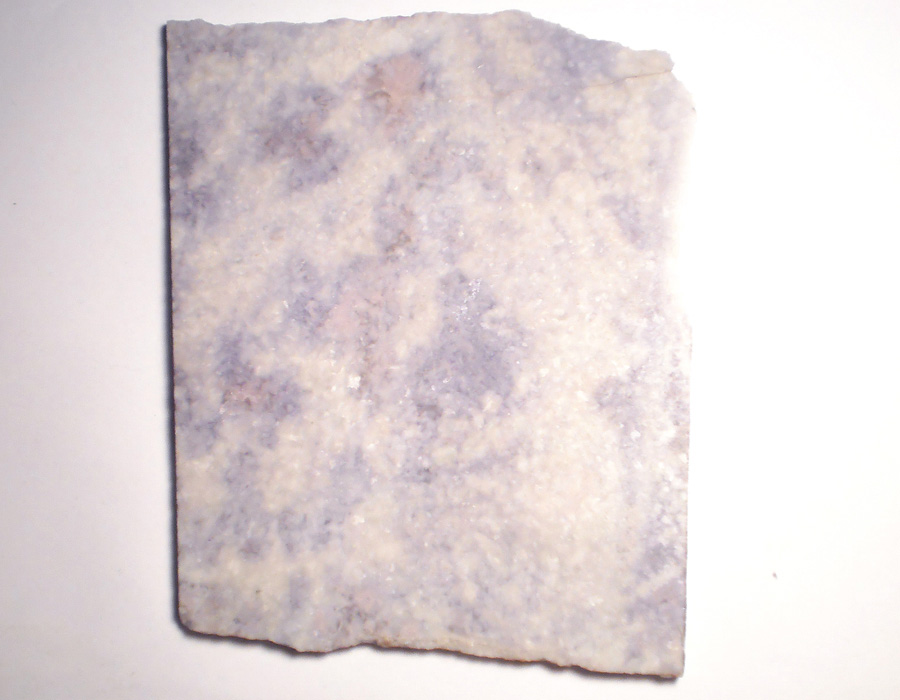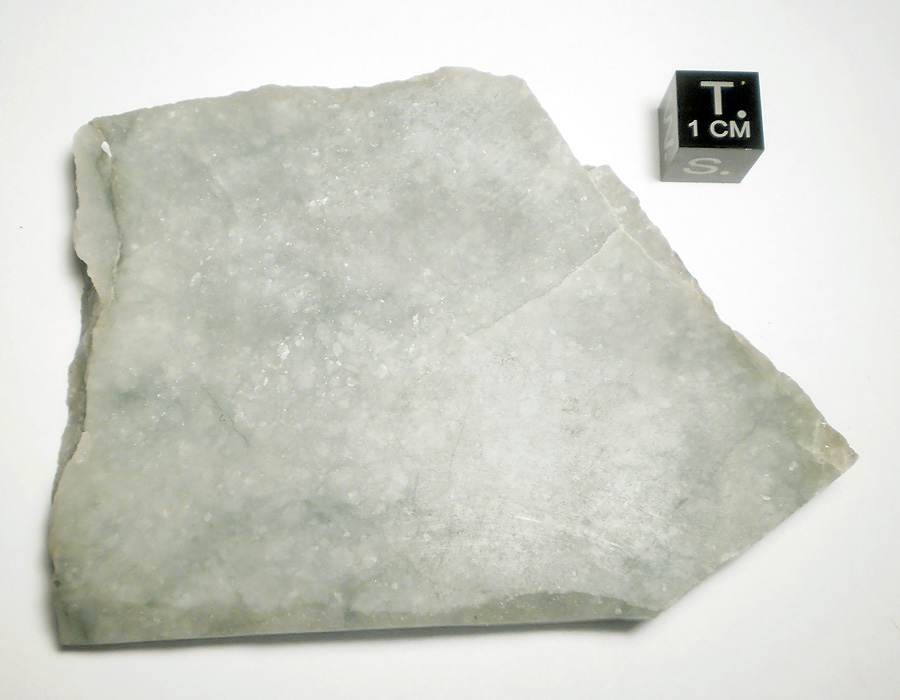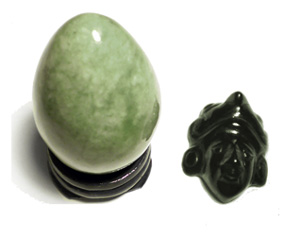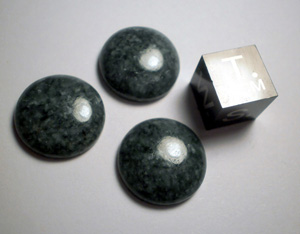English
Castellano
Català
Guatemalan Jadeite
Author: Fred C. Brendecke
Content by courtesy of: Exotic Rocks and Minerals
A primer to help increase awareness of Guatemala's jadeite & jade in general.
In the past Burma has held the crown for the world's best jadeite, today Guatemala is quickly becoming the leading source for Grade A jadeite. Just as its mountainous terrain can support agriculture of just about any type, Guatemala's hotbed of tectonic activity has resulted in the formation of many varieties of jadeite. Nephrite does not exist in Guatemala, so in its place, the tourist market's jade is mainly serpentine or glass. Importation cost limits available material to domestic stones, so when real jade is found it is always Jadeite. Generally speaking, there are a few ways to get jadeite in Guatemala: the tourist markets, the jade factories in Antigua, and out in the field in the areas of Coban or the Motigua river valley. The factories in Antigua are the most reliable with the highest quality product, and highest prices. In the tourist markets, when you find the real thing, it often lacks in luster and/or quality of the cut - appropriately set in average quality jewelry pieces or carvings. Lapidary material availability is limited to the factories or finding it on public land in the localities mentioned. Some factories simply won't sell slabs or roughs, and when they do, it is expensive. Guatemala's national treasure is not well known currently. While Jadeite is highly prized in Asia, especially China, in western regions such as the USA, real jade is frequently not recognized for its value. Outside of the antiquities market, whether rare nephrite or jadeite, westerners often overlook the stones worth and authenticity, and are more in favor of the designer label or precious metals the "green stone" is set in.
The value of jade to the ancient Maya was tremendous, even more valuable than gold. The presence of jadeite artifacts throughout the America's suggests extensive trade routes during ancient times. Jadeite was the hardest available substance for use in weapons and tools until steel was invented, therefore it was a mineral of high industrial value until recent times. The great Mayan emperors where entombed with their lot of jade, among other objects. Tombs have been found with up to 7,000 individual jade objects. It was also typical to place a ball of jade within the mouth, indicating the soul contained the degree of spirituality necessary for eternal life. Jade was also used as a tool for communicating with ancestors. Jade is still honored today among natural healers who utilize ancient Mayan techniques for curing health issues such as back problems, sciatica, migraines, stress and for massage therapy.
Guatemalan jade occurs in a wide variety of colors. Among the most prized being lavender, referred to as lilac or "lila" in Spanish, and blue. An even less common variety is rainbow jade, in which a variety of colors show up in the same stone. Rainbow jadeite, "Arcoiris", can only be found in Guatemala. Black jade is also popular with jade connoisseurs, and is priced equal to the green varieties. Nearly every shade of green jadeite is found in Guatemala, from light mint green to well saturated medium to dark green. Rarely a reddish, or pale grayish white jade is also found. It should be noted that Guatemalan jadeite can carry a degree of translucency, but is not transparent like some forms of jade. Lilac, or lavender jadeite is quite popular and is priced 2-3 times as much as the green or black varieties. Lilac jade's color is due to the presence of manganese. Its discovery was made in 2005 five after a hurricane inundated the Motigua area with floods and landslides, revealing the purplish stone when the storm receded.

Lilac jadeite jade rough slabs from Guatemala
Guatemalan jadeite jade rough slab, mint green
The typical jade grading scale applies equally to Guatemalan jadeite. Grading Guatemalan finished jadeite would include pureness of color, translucency (depending on color), luster, & craftsmanship of cabochons or carvings. Antigua's factories do not price based on weight, but rather size & color. Unlike nephrite, which does not fracture easily, jadeite fracturing is a consideration to take into account. Fractured jadeite is often used for carvings as the fractures will be less obtrusive.


Unlike the markets where they will tell you anything to make a sale, I consider the factory dealers and workers some of the most decent and honest people in the business. However, since they must pay an entire staff to run the operation their products are very expensive. The advantage of the markets is you can negotiate, but know your stuff. Basic rules to follow are: jadeite feels really heavy compared to its size, it can't be scratched by stainless steel blade and if it sounds too good to be true, it probably is. Also, the presence of an armed guard is not only indicative of the value of the products, but insures your safety in a notoriously dangerous country.
Content by courtesy of:
Information | Mineral photos | VIDEOS | Articles | Fairs | Web directory | Classified ads | Minerals Books | Shop


